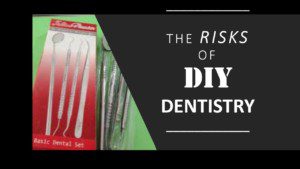
Lately, there have been several articles in the news and posts on social media about “do it yourself” dental procedures. These are, at a minimum, problematic trends which can lead to serious consequences.
Among these are:
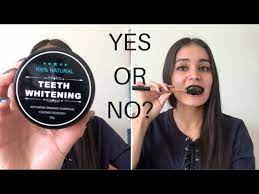
1. Charcoal Teeth Whitening:
I don’t know where this came from, but we’ve all seen an awful lot of it online lately! It’s become somewhat of a popular trend on social media – and *1 can do more harm than good. There is no evidence that shows that dental products with charcoal are safe or effective. On the contrary, using charcoal or anything other than ADA approved products to whiten teeth can permanently damage tooth structure. Even using readily available over-the-counter tooth whitening products, for some people, without the supervision of a dentist, can be problematic, if not used properly. So, use them if you will, but see your dentist regularly so they can help keep an eye on things. Sometimes, a little supervision can go a long way.
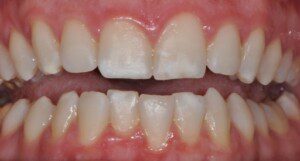
2. Do-It-Yourself Whitening:
A common DIY dentistry tooth whitening practice is to use baking soda (as an abrasive) mixed with hydrogen peroxide and use it in an over -the-counter mouth guard (the kind you boil and make at home) to hold the mixture in place. When used frequently, or in high concentrations, the abrasion can do irreversible damage your tooth enamel.
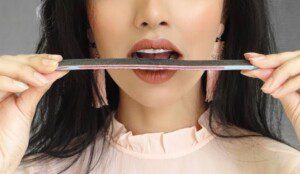
3. Filing Teeth Down with A Nail File:
There’s been a new social media trend of a variety of DIY dentistry hacks, one of the most dangerous being filing teeth down with a nail file in the attempt to make all the teeth the same length. There are several dangers here. First, once a tooth is filed down, it will not regrow, so any damage done from overfilling it will be permanent. Additionally, each tooth has a unique anatomy and the pulp (nerve) of one tooth may be closer to the enamel layer on one than with another. As the enamel is removed, the next layer, the dentin, is exposed. This layer is not nearly as hard as enamel and is much more susceptible to decay and sensitivity. Further in is the pulp, and getting too close to it can result in a wide array of problems ranging from mere sensitivity to excruciating pain, and infection of the nerve, which will require a root canal to remedy. Filing of a tooth may seem like a minimal thing, but it can cause big problems if not done correctly.
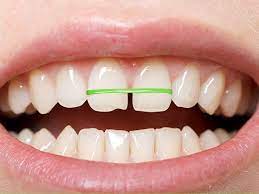
4. Do-It-Yourself Tooth Straightening:
Reports of people using rubber bands to straighten crooked teeth is particularly troubling. Rubber bands can work themselves under the gum causing inflammation, bone loss and damage to your gums. Not only is this ineffective, but also extremely dangerous. It’s not uncommon to lose teeth with this technique. You should never try to straighten teeth without professional supervision! For teeth to be moved without becoming loose or damaging the jawbone, it is important that they are moved slowly, in a controlled manner and only within certain parameters. Only a trained professional knows and can manage these safely. Do NOT try this at home. (Which brings me to another marginally legal technique):
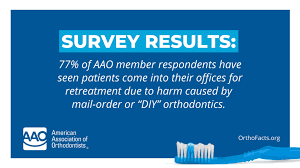
5. Unsupervised “Mail Order” Orthodontics:
There are companies out there that will either send you somewhere to “scan” your mouth digitally or send you “One-Size-Fits-All” impression trays to make your own impressions of your mouth with at home, then mail them in, and have the company send you aligners that will purportedly straighten your teeth. All of this happens without you ever being evaluated by an orthodontist, let alone a general dentist! Sometimes, people seek this treatment out because they feel like they can’t fit in office visits into their busy schedule. Other times, they think it will cost less than in-office treatment. And, on the surface, without understanding the dangers involved, this may seem like a reasonable idea to the average person with no dental anatomy training. Who doesn’t want to save time and money, right? If it were only that easy and predictable.
In my humble opinion, based on over 30 years of dental experience, attempting to accomplish any of this without the supervision of a trained professional is very risky and dangerous. Doing this would be along the same vein as the old adage, “Any attorney who represents himself has a fool for a client.” Anyone who attempts to do their own dentistry may as well do their own brain surgery! Don’t.
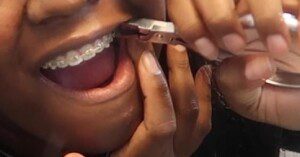
6. Removing Your Own Braces:
This can be a catastrophic thing! First of all, the cement that is used to hold the brackets onto the teeth is extremely strong. It can be very, very difficult to remove brackets from the teeth without damaging them. Additionally, because of the force required to do this, other teeth can be broken in the process by way of the pliers or whatever tool being used. And even if you do manage to get them all off, then you have a lot of cement still attached to the teeth, and this, too, is very difficult to remove without damaging the teeth. This is one of the most dangerous DIY dentistry procedures you can attempt.
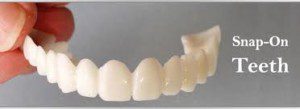
7. Unsupervised “Mail Order” Pop-on/Snap-on type veneers, bridges, partial dentures, etc.:
Your teeth are never even seen by a dentist. It’s all pretty self-explanatory. A company mails you an impression kit to make impressions of your mouth with at home . You make the impressions and mail them back. Then, they make you a one unit, one color, snap on, removable smile. This is purely cosmetic, (and not a very realistic-looking option, at that), and definitely not a “fix” at all. With regular wear, these trap plaque and bacteria underneath, so your teeth are constantly bathing in them, and potentially cause more problems than you already have.
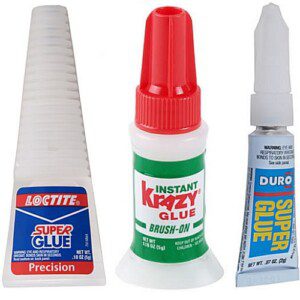
8. Using Super Glue in Your Mouth:
One of the most toxic substances people have used to attempt various DIY dentistry procedures is Super Glue. People often use it to recement crowns or bridges that have fallen off. This can gravely damage the tooth structure beneath the crowns or bridges. If this happens to you and you are unable to see a dentist right away to have it recemented, there are temporary cement kits at most pharmacies that will take care of the problem with substances safe to use in your mouth.
*2The ADA discourages the use of direct to consumer dental products, including mouth guards, snoring appliances, teeth whitening trays and bleaching products, partial dentures, veneers and aligners.
I think most people who seek out or consider DIY dental treatment are looking for answers, but just don’t have a dentist they can speak with. Or one they trust. Before considering any DIY dental treatment, no matter how simple it may seem to you, ask a dentist to evaluate your mouth and offer suggestions suitable to your individual circumstance.
As always, my staff and I are always available to discuss any concerns you have about dental procedures and how they can impact you and your family. Let us know what you’re thinking, so we can think it through with you.
Sources cited:
*1 Journal of the American Dental Association, Sept, 2017
*2 The ADA website: mouthhealthy.org
*3 Katie Kouric Media Article (Jan 2023) on the subject
*HealthNews.com article (Dec 2023) on DIY Dentistry trends


